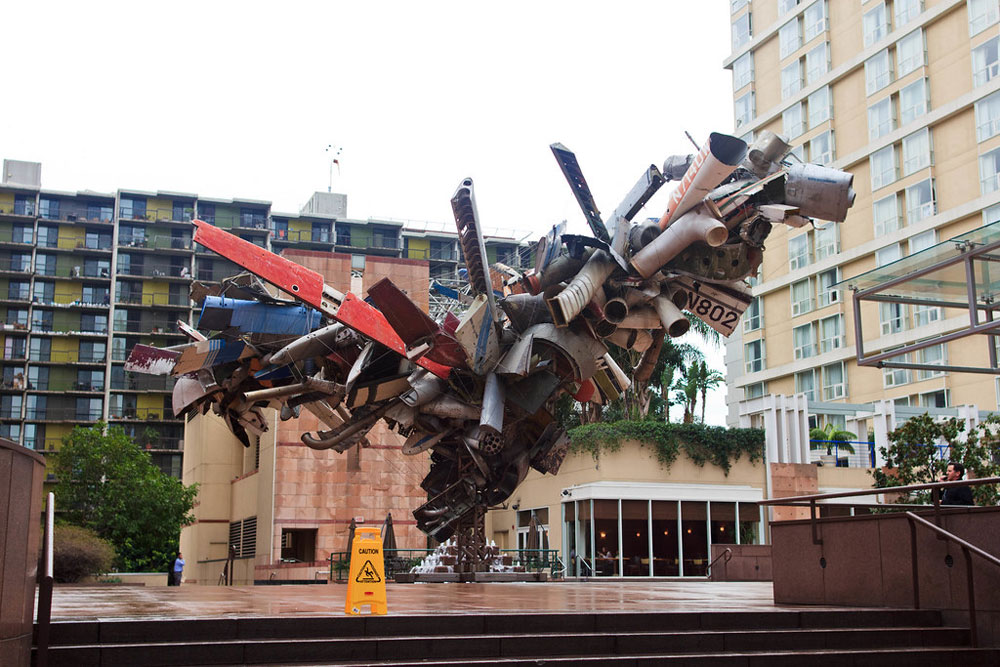
May 20, 2019; Hyperallergic
As arts institutions in the US struggle with rising operating costs and, often, lower attendance, some are adopting an approach that may seem counterintuitive: waiving admission fees and making arts experiences free for all who wish to participate. As reported in Hyperallergic, the Museum of Contemporary Art (MOCA) in Los Angeles is the latest high-profile museum to adopt a free admission policy.
To be clear, this does not mean that MOCA—or any other cultural institution that throws open its doors to the public—is in a position to give away what it has to offer; it does suggest, however, that donors are increasingly seeing the value of subsidizing ticket costs, which allows arts institutions to “walk the talk” of making everyone feel welcome while removing barriers that might have kept some people away in the past. NPQ recently reported on a similar trend in nonprofit theaters, with a mix of fully subsidized and pay-what-you-will ticketing strategies.
At MOCA, the free admission policy is possible because of a $10 million gift from the museum’s board president, Carolyn Clark Powers. In making her gift, Powers said, “Charging admission is counterintuitive to art’s ability and purpose to connect, inspire, and heal people.” This policy shift also represents a re-thinking of the museum’s place in the community. As explained by MOCA director Klaus Biesenbach, “As a civic institution, we should be like a library, where you can just walk in.” Interestingly, Biesenbach said the policy is not about growing attendance, but is focused on advancing accessibility.
The Hyperallergic article notes that MOCA is the third museum in Los Angeles to adopt a free admission policy, following The Broad and the Hammer Museum at UCLA. MOCA’s annual admissions revenues are about $2 million, so the $10 million gift will cover the costs of free admissions for five years. MOCA is in the process of transitioning to the new policy, which was announced on May 18th. The museum expects the policy to be permanent and will look to “create new fiscal strategies and develop revenue streams to support free admission” beyond the five-year span covered by Powers’ gift.
Sign up for our free newsletters
Subscribe to NPQ's newsletters to have our top stories delivered directly to your inbox.
By signing up, you agree to our privacy policy and terms of use, and to receive messages from NPQ and our partners.
In early 2017, we reported on the balancing act faced by museums in setting—and sometimes raising—admission prices. Costs must be covered, even as institutions make genuine efforts to be more accessible. Pay-what-you-will policies rely on those who can afford to be more generous doing so, which does not always work. At New York’s Metropolitan Museum of Art, a decrease in pay-what-you-will admission revenues was cited as one of the reasons for implementing set fees for non-New Yorkers in 2018, a change that did not seem to hurt the Met’s attendance.
One of the points raised in that 2017 article was that it is sometimes difficult to convince a major donor to subsidize admission costs rather than a capital campaign, as the latter affords the opportunity of having one’s name attached to a building, a gallery or some physical space. So, donors like Powers who see the wisdom in simply making art accessible to everyone should certainly be applauded. And as a board chair, her decision to align a major gift with an institutional goal sends a strong message to other potential donors—at MOCA and elsewhere—about the importance of investing in an organization’s priorities.
It will be interesting to see how and whether museums and other arts organizations continue to support free admissions over time. Provided free admission is sustained, will these policies more people feel welcome and, as Powers hopes, advance art’s capacity to “connect, inspire and heal”? Will individual contributions increase from those who no longer have to purchase admission tickets?
But where there is a way to support this type of model—and, of course, a will to make it sustainable overt time—the benefits to the community certainly seem to outweigh the risks.—Eileen Cunniffe













